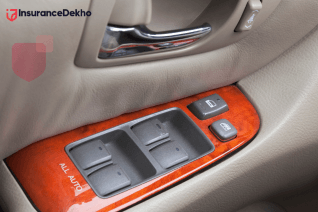Detailed Comparison Between Own Damage And Comprehensive Car Insurance Policy
Want to know about the differences between Own Damage and Third-Party Liability insurance. Read along to know more!
Table of Contents
You may have come across the words Own Damage and Third-Party Liability while looking for auto insurance. These are the most basic sorts of plans available from your insurer. After you've chosen a plan, you can get down to business with the policy's details, such as length and add-ons. But first and foremost, it's critical to figure out what works best for you.

Comparison of Own Damage vs. Comprehensive Car Insurance
People searching for extensive coverage would choose for an annual Comprehensive Car Policy before the long-term car insurance law (new automobiles must have a long-term Third-party policy that is good for 3 years). There was no ambiguity between Third-party and Own Damage coverage because both were provided for the same amount of time. We must determine which form of policy is best for you now that long-term third-party insurance is required for new automobiles for three years. Let's start by dissecting these plans and learning about the various coverages they offer.
-
The main cover
The insured automobile is covered by own-damage car insurance. Third-party car insurance, on the other hand, covers third-party liability.
-
Exceptions to the rule
Automobile insurance for personal injury protection It doesn't cover third-party liabilities, but it does cover Own Damage under third-party automobile insurance.
-
Is it required?
No, own damage coverage is not required, but third-party automobile insurance is. Yes, in order to comply with the law, you must get Third-Party Car Insurance coverage.
-
Is that enough?
Because you are required to purchase a Third-party plan, adding the Own Damage Coverage to your policy will increase your insurance coverage. Purchasing merely third-party coverage may be insufficient since you will still be responsible for the expenditures associated with your vehicle in the event of damage.
-
Validity
It might be one, two, or three years. People, on the other hand, choose to get a short-term plan because long-term insurance might be costly. If you buy a new automobile, you must get a CVDXSQa 3-year Third-Party Car Insurance policy. You can also choose for yearly coverage.
-
Can this policy be tailored to our needs?
Yes, you may tailor the Own Damage coverage to meet your specific needs by adding auto insurance add-ons. No, this plan cannot be customized.
-
Is it possible to negotiate a lower cost?
Yes, you may compare vehicle insurance policies from many insurers online to find the greatest coverage at the lowest cost. No, the price of this coverage is set by the insurance regulation, and insurance firms are not allowed to modify it.
Advantages of Third-Party Automobile Insurance
The following is a list of advantages:
- Property damage to third parties
- Third-party medical treatment coverage
- Compensation in the event of death
- Coverage for legal ramifications if you hit someone or damage their property by accident.
Own Damage Car Insurance's Advantages
The following is a list of advantages:
- Damage to the automobile as a result of an accident is covered.
- Coverage for theft
- Natural or man-made disasters are covered.
- Damage caused by fire
- Add-ons can be used to customize the plan.
Take Away
While Comprehensive coverage is more expensive and it provides more comprehensive coverage that can cover your financial expenditures in the event of an unexpected event. If comprehensive coverage is out of your price range and you want less expensive insurance that still covers your bike in the event of damage, the Own Damage policy is the way to go.
Also read - Everything You Need To Know About Cashless Car Insurance Policy
Disclaimer: This article is issued in the general public interest and meant for general information purposes only. Readers are advised not to rely on the contents of the article as conclusive in nature and should research further or consult an expert in this regard.














































